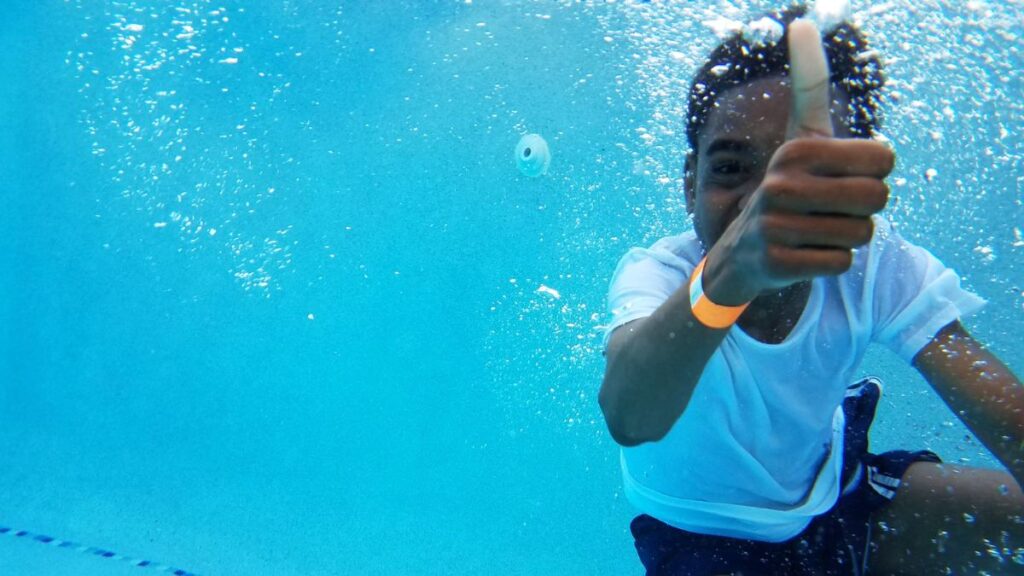Swimming is not just a vital life skill but also a fun and exciting activity for children. Engaging your child in water-related activities can help them become comfortable and confident in the pool. Whether it’s splashing around, learning new skills, or enjoying games with family, water activities can foster a love for swimming. Here are seven entertaining and educational activities that will encourage your child to dive into the joys of swimming.
1. Water Games to Boost Confidence
Games are one of the best ways to make swimming enjoyable for kids. Classic games like Marco Polo and water tag can turn an ordinary swim into an engaging experience. These playful interactions not only teach your child how to swim but also help them gain confidence in the water. When children are having fun, they often forget they are learning, which is the best way to absorb new skills.
Another great option is to set up a mini obstacle course in the pool. Use floating toys, hoops, or even pool noodles to create challenges. This encourages your child to practice swimming techniques such as diving, floating, or treading water, all while having fun and playing with friends.
2. Incorporating Music into Swimming
Combine the allure of music with swimming to create an engaging atmosphere. Play some of their favorite songs while in the water. You can introduce simple dance moves that children can practice while submerged. Concepts like rhythm and movement can become part of their swimming lessons.
Singing songs in the water can also lead to enjoying the pool environment. For example, try singing playful songs related to water, allowing your child to mimic movements or pulsate to the beat. Engaging them in this multi-sensory experience can help decrease anxiety and increase their enjoyment in the pool.
3. Storytime Splashes
Incorporating storytelling into swim time can capture your child’s imagination. Before swimming, choose a water-themed story and narrate it to them while they’re in shallow water. Choose tales about fish, mermaids, or ocean adventures to keep them intrigued. As you read to them, encourage them to act out parts of the story, like swimming like a fish or gliding like a dolphin. This not only makes swimming enjoyable but also helps them build creativity through movement. Consider signing them up for British Swim School lessons where storytelling elements may be integrated into their swimming experience. This connects literacy with physical activity, enriching both skills simultaneously.
4. Nature Exploration in the Water
Taking your child swimming outside can add elements of nature exploration. Visit lakes, rivers, or beaches where your child can witness wildlife, collect interesting rocks, or explore various aquatic plants. This learning experience allows them to appreciate the natural world while building their swimming abilities. Encourage them to search for different colors and types of stones or shells, helping them learn observation skills. Engaging in nature can create a sense of wonder, making water feel less intimidating. Ensure safety by always supervising them and using proper flotation devices when exploring unfamiliar waters.
5. Synchronized Swimming Fun
Synchronized swimming offers a blend of artistry and athleticism, working as an exciting activity for your child. Introduce basic moves and routines, encouraging them to work together with friends or family members. The idea is to create simple formations and arm movements that sync with a song or rhythm.
This activity helps strengthen muscles and increases breath control without feeling like a formal swimming lesson. It also cultivates teamwork and collaboration, showing your child the importance of working together to achieve a common goal.
6. Dive Into Friendship with Group Classes
Group swimming lessons are an excellent way for children to meet new friends while learning to swim. The social aspect of group classes can motivate them to develop their skills further. When participating with peers, kids often find the learning process more effective, as they watch each other and encourage one another.
Joining group lessons also allows for social interaction and bonding over shared experiences. Look for local swimming classes that label themselves as fun-focused or kid-friendly. This makes the lessons feel less daunting and instills a sense of camaraderie among participants.
7. Pool Science Experiments
Creating a science-themed day at the pool can enhance your child’s understanding of basic scientific principles while promoting swimming skills. Start with simple experiments such as testing buoyancy with different objects. Ask them to predict which items will sink or float—this can spark curiosity and involve them physically in the learning process. Experiments can also include making waves by splashing or exploring temperature differences in various pool areas.
These activities ensure that your child associates swimming with exploration and inquiry, transforming each swim session into an opportunity for learning.

By engaging your child in these fun water activities, you create a positive association with swimming that encourages them to become proficient swimmers. Remember, the key is enjoyment—when swimming is fun, children are more likely to embrace it wholeheartedly.







